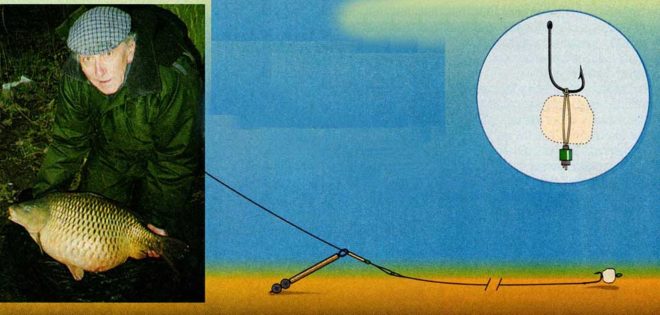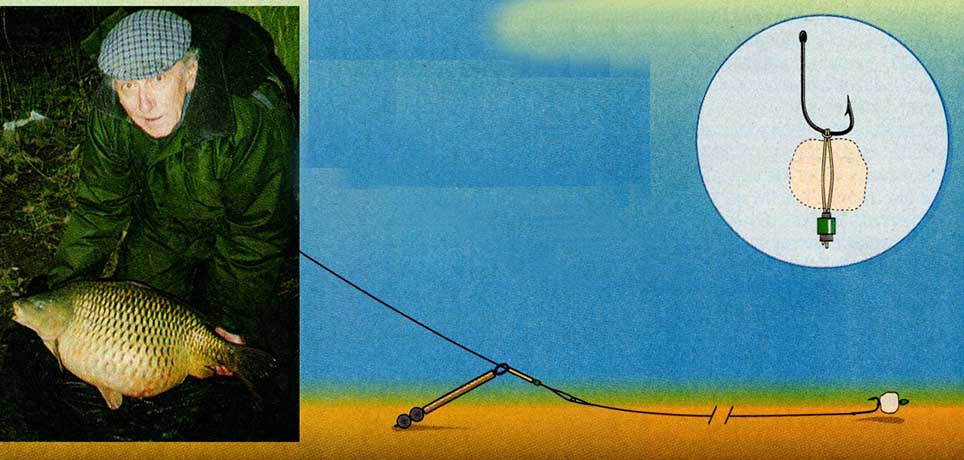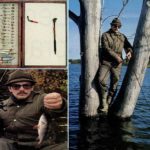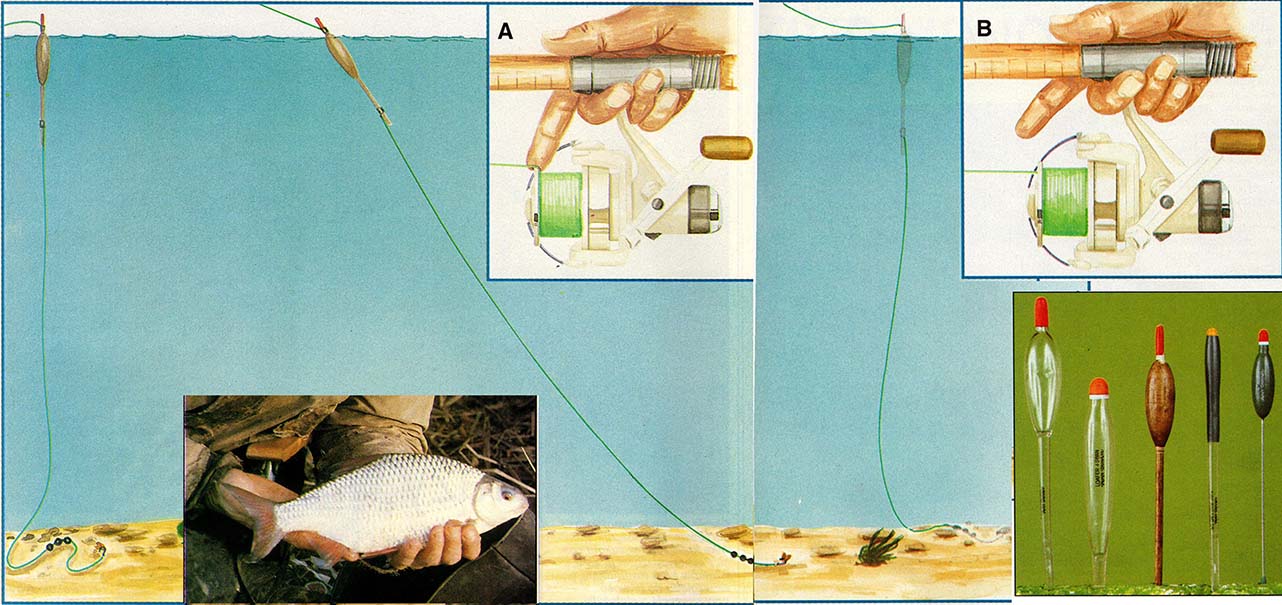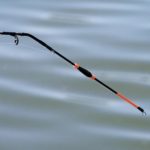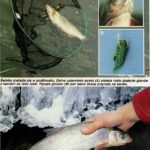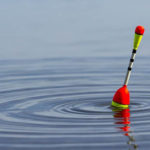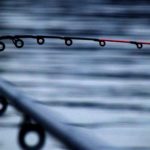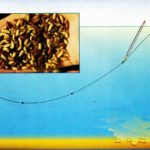Anglika Petera Stone a uważa się za wynalazcę metody „łowienia na wyczucie” z lekkim ciężarkiem dennym. Okazuje się jednak, że nawet mistrzowie mogą nauczyć się czegoś nowego nad wodą.
Kiedy dyskutuję z kolegami na temat łowienia z gruntu na zestaw z ciężarkiem dennym, jako jedyny konsekwentnie upieram się przy stwierdzeniu, że zacinać należy już przy najdelikatniejszym poruszeniu się szczytówki wędziska lub szczytówki sygnalizującej brania. Niestety jednoznaczne stwierdzenie, czy w danym momencie jest to branie (gdy ryba w pełni bierze przynętę do pyska), czy też jedynie oznaka zainteresowania się przynętą (gdy ryba dopiero próbuje przynętę) nie jest wcale łatwe. Jestem jednak w tej szczęśliwej sytuacji, że dzięki wieloletniej praktyce (prawie całe życie spędziłem nad wodą) potrafię dziś prawie bezbłędnie odróżnić branie „nadające się” do zacięcia od bawienia się ryby przynętą. Przy klasycznym braniu szczytówka wędziska prawie zawsze łagodnie się przygina, natomiast przy pustym skubnięciu, kiedy ryba chwyta przynętę do pyska i natychmiast ją wypluwa, szczytówka wpada w gwałtowny rezonans i natychmiast nieruchomieje.
Perfekcyjne branie
Umiejętność bezbłędnego wyczucia, że ryba pewnie trzyma przynętę w pysku sprawia, że wędkarz gruntowiec, który posiadł tę sztukę, zawsze będzie skuteczniejszy od kolegów o mniejszym doświadczeniu.
W grudniu zeszłego roku wędkowałem w pewnej rzece w pobliżu Oxfordu. Było przenikliwie zimno, a przy brzegu tworzyła się już cienka warstewka lodu. Nastawiony byłem głównie na łowienie kleni z gruntu na kostki mielonki śniadaniowej. Mój ciężarek był tak lekki, że w momencie brania natychmiast się przesuwał. Ponieważ liczyłem się z bardzo ostrożnymi braniami, nie spuszczałem mojej drgającej szczytówki ani na sekundę z oczu. Pogoda była bezwietrzna, więc doskonale widziałem każde poruszenie się szczytówki sygnalizującej brania.
I oto nagle szczytówka się przygięła, nie za mocno, ale bardzo płynnie i zdecydowanie – branie doskonałe. Po niezwykle emocjonującej walce udało mi się wyholować pięknego karpia pełnołuskiego o masie 7 kg. Było to dla mnie ogromne zaskoczenie, gdyż w rzece tej rzadko kiedy udawało się komuś złowić karpia, nie mówiąc o tak dużej rybie. Trud dokładnego wyważenia zestawu opłacił się więc aż z nawiązką. Dumny ze swego wyczynu postanowiłem złowić jeszcze kilka karpi, ale trzy następne dni nasiadówki nad wodą zakończyły się porażką.
Wspomnę tylko, że szczytówka mojej wędki kilka razy się przygięła, dwa razy zaś tak coś szarpnęło, że o mało nie wyrwało mi kija z ręki. Niestety ani jedno zacięcie nie okazało się skuteczne. Czułem intuicyjnie, że moją mielonką śniadaniową interesują się karpie, jednak z niezrozumiałych względów wypluwają ją zaraz po wzięciu do pyska. Tłumaczyłem to sobie w dwojaki sposób: albo mielonka śniadaniowa budzi u ryb jakieś podejrzenia, albo zestaw, na który łowiłem nie był wystarczająco czuły. Postanowiłem zmienić i jedno i drugie.
Mięsna przynęta
W tak zimnej wodzie karpie mogła zainteresować jedynie przynęta mięsna. Skoro mielonka śniadaniowa nie za bardzo im odpowiadała, zdecydowałem się łowić na ciasto z kiełbasy parówkowej oraz panierki. Sama kiełbasa parówkowa słabo trzyma się na haczyku, natomiast ciasto z niej ma już odpowiednią konsystencję. Do ciasta z kiełbasy parówkowej miałem duże zaufanie, gdyż od wielu lat z powodzeniem łowiłem na nie brzany i klenie. Przygotowałem sobie też delikatny zestaw włosowy. Ciężarek wykonany z kilku śrucin, 4-centymetrowej plastykowej rurki oraz kółeczka łącznikowego (patrz rysunek) zamontowałem przelotowo, aby ciężarek „pałeczka” miał możliwość swobodnego przesuwania się po żyłce głównej. Cała sztuka polegała na takim dobraniu masy śrucin, aby prąd wody nie znosił całego zestawu z wybranego miejsca. Silikonowa rureczka (służąca jako „odbój”) na żyłce głównej oraz przesuwalny stoper z tworzywa sztucznego zapobiegały zsuwaniu się ciężarka na przypon z przenętą.
Zestaw autora jest prosty i dopracowany w detalach. Przelotowy ciężarek „pałeczka” wykonany jest z dwóch śrucin, kawałka naprężonej żyłki, plastykowej rurki oraz kółeczka łącznikowego. Dwa włoski zaciskane stoperem pewnie przytrzymują przynętę (miękkie ciasto).
Przypon (możliwie najkrótszy, gdyż w przeciwnym razie zbyt często się plącze!) wolę wykonywać z plecionki niż z żyłki monolitycznej. Uważam, że biorąca ryba prawie nie wyczuwa miękkiego jak jedwabna nić przyponu z plecionki, co najwyżej wydaje się jej, że jest to nitka glonów porastających dno. Włosek z cieniutkiej żyłki monolitycznej przywiązuję bezpośrednio (z małą modyfikacją) do kolanka haczyka numer 6. Dwa sterczące wąsy „włoska” łączę ze sobą plastykowym stoperem (zaciąganym). Jak już wspomniałem, miałem zamiar łowić na ciasto i tylko dwa „włoski” gwarantują tak miękkiej przynęcie w miarę pewne przymocowanie do haczyka.
Następnego dnia pod wieczór okazało się, że mój wysiłek nie poszedł na marne. Miałem trzy brania i dwa z nich udało mi się zaciąć. Złowione przeze mnie karpie pełnołuskie miały 5,5 oraz 13,5 kg.
Z tego , co później ustaliłem, większa ryba była już kiedyś złowiona na wędkę i z powrotem wypuszczona do tej małej rzeczółki, w której oprócz mnie łowiło jeszcze kilku miejscowych wędkarzy.
